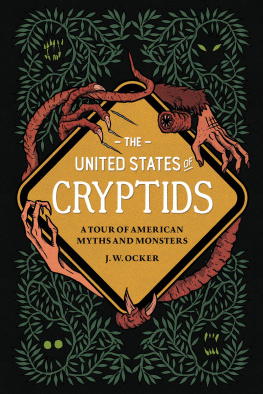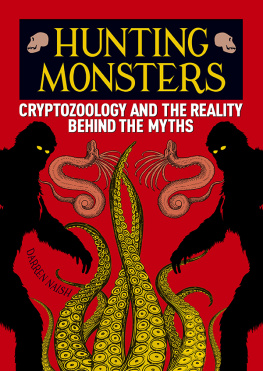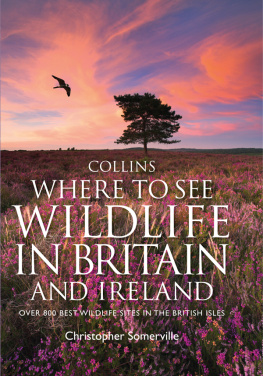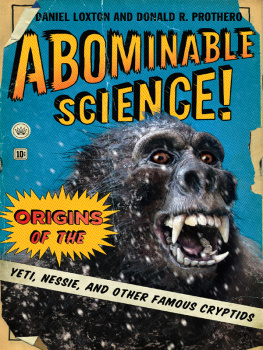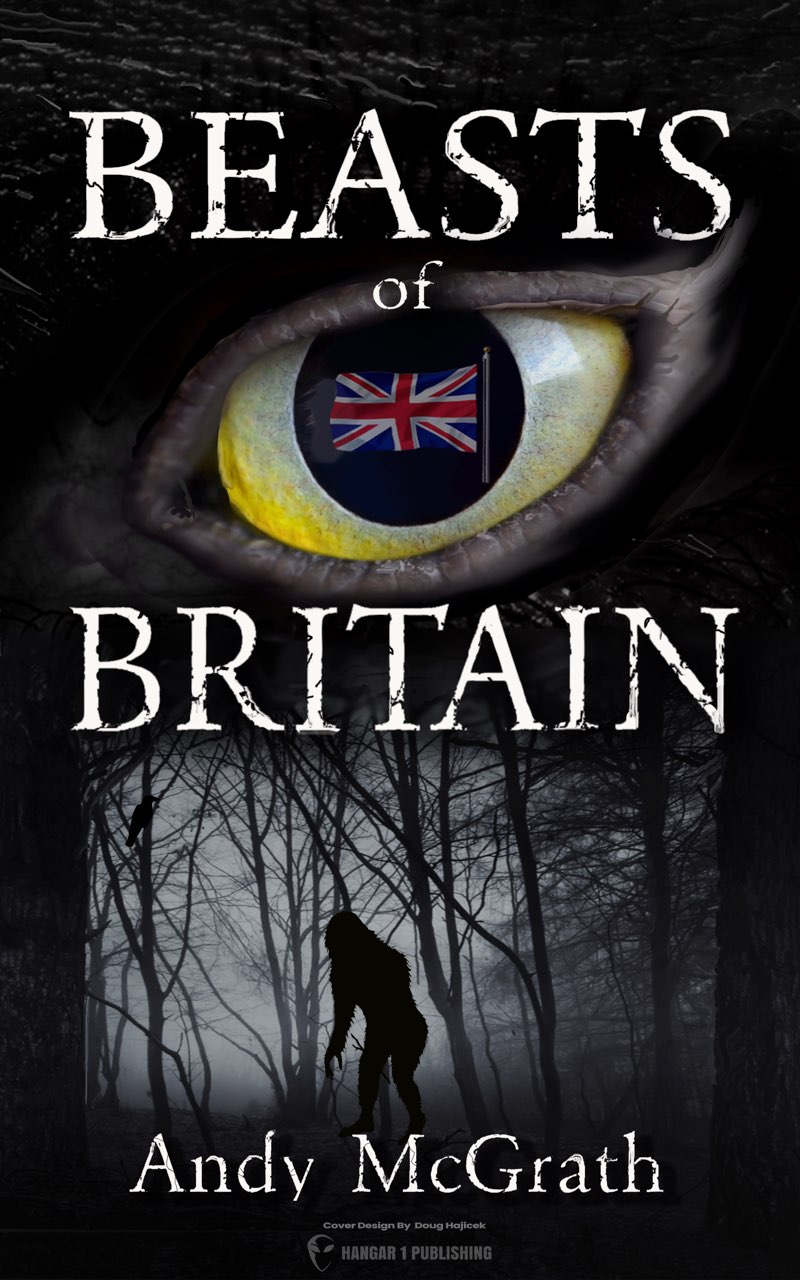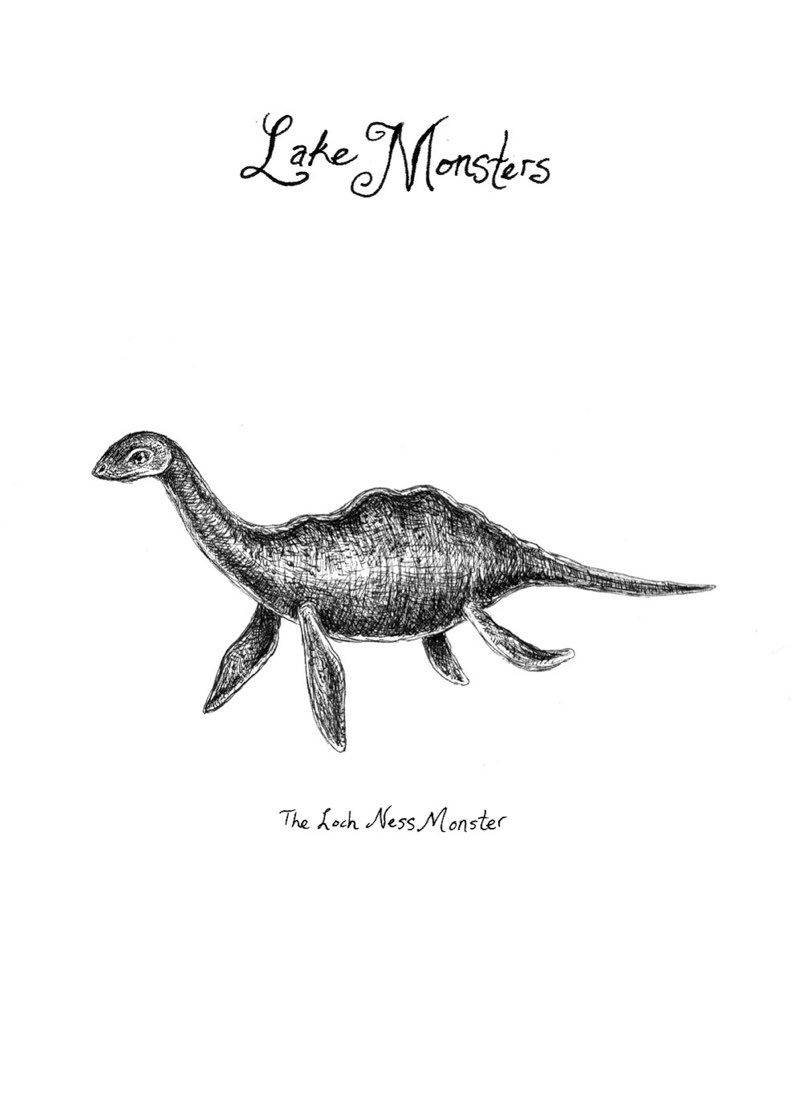INTRODUCTION VIDEO
The idea to write a book about the - Beasts of Britain - came to me one day, while making a compilation of British Sea Serpent and Lake Monster reports for a friend, who had adamantly refused to entertain the idea that there were any cryptozoological areas of significance in the UK, other than Loch Ness. To my surprise, what I discovered while piecing together reports of these watery denizens of the deep, was that they were not the only unknown animals being reported in the British Isles. What first started as a trickle of information grew quickly into a flood, of report after report.
As a life-long cryptozoology enthusiast, I felt that the people of Britain deserved to be made aware of the wealth and mystery of their little island in the North Atlantic; and how its awesome ecology may have supported and hidden these monsters of myth and legend. I began scouring the myriad cryptozoology and paranormal social media sites in an attempt to find a single group, page, or book that professed to investigate them all, seriously and with the proper respect such illusory animals deserved; but found nothing to satiate my appetite. Out of this environment of literary scarcity, an idea arose within me to write a book, something I had never done before, to highlight the rich and diverse history of cryptid reports in the U.K.
Though the British Isles has a long tradition of monster sightings, in both its historical records and folklore, the focus of this work is primarily focused upon current research and recent accounts of these anecdotal animals. In fact, it is a body of work in which the eyewitness is king, and the sceptical host must give deference to his honoured guest. And; although many hours of research and examination of the facts have been surrendered in pursuit of an unbiased offering on this tainted and oft treacherous area of cryptozoology; this book must, at its very end, be read for pleasure and not as a work of science or academia.
I have, to the best of my ability and with good conscience, attempted to present both the eyewitness accounts, common theories and my own personal hypotheses, in a way in which my subjective opinions and beliefs are most inhibited, but, freely admit to the impossibility of succeeding in such an objective endeavour. Therefore, it is in a spirit of openness and honesty that I request this work be consumed by the reader, who is open to taste new fare, with an ever-present reminder to chew cautiously, being ready always, to 'eat the meat and spit out the bones'.
Britain is a well-surveyed country, a cartographer's dream, as it were, with many of the boundaries between its cities, towns and villages being unchanged since ancient times. As a nation, its talent for administration and trade at one time changed the infrastructure of the known world. Nevertheless, despite its historical organisational agility and its numerous departments and bodies dedicated to governing wildlife and the environment, it is not presently a country in search of new species.
Indeed, any current speculative field work that we are invested in is primarily focused on monitoring or attempting to control invasive species; in what can only be described as a noble yet flawed effort to preserve our native ecology. This effort, if it can be called that, is, unfortunately, failing miserably due to poor border control policies and an unwillingness as a nation to invest in the preservation of the natural environment.
Among zoologists and other wildlife experts, the mere suggestion that extinct species, like the plesiosaur, could be inhabiting our waters; or that a descendent of Homo Neanderthalensis could be roaming our forests and hills, would bring a scornful smile to the face of even the most open-minded zoologist. Indeed, even the proposal that a growing population of large predatory cats, which are alleged to have been roaming the countryside since the late 1970s, can hardly be mentioned without the usual rebuff about tabloids selling headlines or over-imaginative hikers transforming moggies into monsters!
As far as science is concerned, the accepted fauna of the British Isles was catalogued long ago, and persistent reports of water monsters, wodewose, werewolves, little folk, black dogs, big cats and unidentified flying creatures are tall tales; nothing more than superstitious yarns spun for our entertainment. And yet, we overlook that ancient Britain was home to the woolly mammoth, the cave lion, hippopotamus! In fact, until comparatively recent times, even large predatory species like the Eurasian brown bear and wolf roamed our land. Is it really so far-fetched to entertain the theory that some elusive, shy species have evaded detection?
Britain is a country that is underexplored and overlooked, an island in a sea of city dwellers, convinced by their grey concrete cityscapes of the lack of available habitat within their tiny island paradise. Which to the common mind seems full to the brim with people, bustling and busy and with barely a scrap of land upon which to graze a lamb! This, however, could not be further from the truth! In actuality, only 6.8% of Britain consists of urban sprawl (a figure inclusive of rural development and roads).
In this book, I have tried to dedicate some space to common theory, and to examine the theoretical behaviours of some of these elusive animals. For, if we are to conclude that these creatures are, in fact, flesh and blood, then they must have repeatable behavioural traits that can be discerned and learned by the intrepid and careful researcher. Such an assignment requires that we conceptually act against what we have been taught to hold true. Against the so-called bedrock or fabric of our psyche and to entertain as real, what we have been conditioned to believe to be a fairy-tale fable. In this temper, I ask that the reader open their mind, just a little, to what I like to refer to as; 'the temporary suspension of disbelief'. A concept, in its most basic implementation, that initiates that hidden place in our mind that often dies with the child in us. That which can conceive of the fantastical and that is more willing to accept bare truth, regardless of its composition or plausibility.
It is this courage that I would seek to imbue in the reader before they embark upon their journey into the world of cryptozoology and even more so, British cryptozoology, a much-maligned subject, even among the enthusiastic researchers of these, as yet, unclassified animals.
For, although vast advancements in science and technology have brought great discoveries in other lesser-known parts of the world, this island still lies largely underexplored and overlooked. At night, outside the busy cities and next to the unlit lakes and lonely mountains, it is an island in darkness, where nobody ventures into the woods anymore and the power of the pervading paradigm scares all but the most foolhardy away from any serious investigation, of the many, yet to be discovered - Beasts of Britain.



